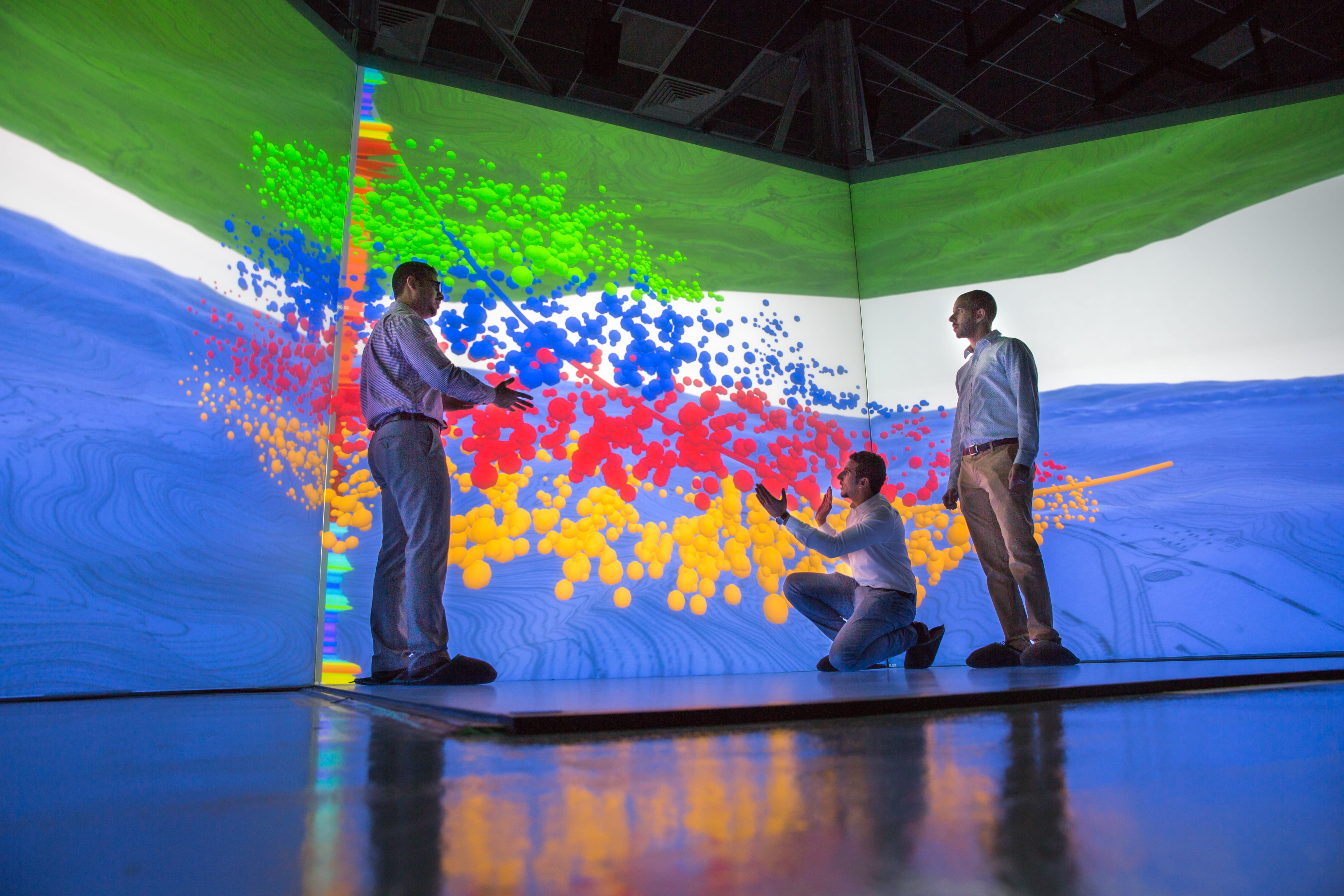‘Sound Inspiration’ – how rock ‘n’ roll inspired a new way to search below the surface
Saudi Aramco’s Geophysical team are looking for a better way to acquire seismic data and map Saudi Arabia’s subsurface.

- Saudi Aramco’s Geophysical Team inspired by home hi-fi systems to look for a better way to acquire seismic
- A new technique to harness the power of low-, mid-, and high-range speakers across an array of vibrator trucks
- Two phases of innovation
Who would have thought that teaming one of the essential tools of rock and roll with seismic surveys could make life more exciting for geophysicists and other personnel in the deserts of Saudi Arabia?
On tour, legendary rock and roll acts are famous for their 100-foot high speaker stacks. And, as anyone who has attended a major concert can attest, the deep rumble of the bass notes can vibrate your whole body.
A high-end home hi-fi system can perform the same function — and it is the very same home hi-fi system that inspired Saudi Aramco’s Geophysical team to look for a better system of acquiring seismic data, and mapping Saudi Arabia’s subsurface in the search for hydrocarbons.
Rather than speakers playing to a 100,000-capacity arena or to a family enjoying their home entertainment system, a new audience was revealed — the layers of rock below the sand dunes of the Kingdom of Saudi Arabia.
Harnessing the power of sound
The origins of the idea began at Technical University in Delft, the Netherlands, where Saudi Aramco has a research and development center, when professor A.J. Berkhout suggested a new technique to harness the power of low-, mid-, and high-range speakers across an array of vibrator trucks. These specialized trucks are used in the field to generate the acoustic waves that are used to build up a high resolution picture of the subsurface.
A seismic vibrator truck designed to traverse the desert sands of Saudi Arabia.
Traditionally on a seismic survey, a broadband vibrator truck generates all the sound frequencies in a sequential mode. Just like an entry-level home hi-fi system, such an all-in-one single speaker does not produce the best sound — it is when dedicated narrow band speakers (the woofer, mid-range and tweeter) are brought into play that the best and most accurate sound is produced.
Inspired by speaker systems and convinced by the logic of the approach, a team of Saudi Aramco geophysicists conducted a successful pilot in the field to test the concept — a 3-D Dispersed Source Array blended seismic acquisition experiment — the first of its kind in terms of field operational efficiency and quality of seismic data. The method consisted of multiple narrow band vibratory seismic sources (low and high frequency sources) operating simultaneously to conduct a super high density seismic survey.
Innovation in two phases
The secret to the approach lies in two phases of innovation. First, the waves emitted from each of the individual narrowband sources (‘the speaker’) produce a significantly higher signal to noise ratio at the source, enabling the team to use state-of-the art data processing technologies to image the subsurface.
"Second, we are able to simultaneously acquire the data, significantly reducing the time it takes to acquire the survey," Constantine Tsingas, project leader at Saudi Aramco's EXPEC Advanced Research Center said.
Compared to a conventional seismic survey, which averages around 10,000 vibration points (VPs) over 24 hours, with the new approach, the survey team averaged 58,000 VPs.
"A survey that may take six months could be reduced to two. Not only does this result in cost savings, but more importantly, it could reduce the time that personnel are needed to work in extremely harsh environments."
Constantine Tsingas, project leader at Saudi Aramco’s EXPEC Advanced Research Center
"This means a survey that may take six months could be reduced to two. Not only does this result in cost savings, but more importantly, it could reduce the time that personnel are needed to work in extremely harsh environments," Tsingas says.
The next step is for the team to take their learnings from the pilot and progress to an operational model.
Project leader at Saudi Aramco’s EXPEC Advanced Research Center Constantine Tsingas (middle back) and his team Abdulrahman Al Shuhail (front left), Mohammed Al Mubarak (sitting) and Zygmunt Trzesniowski (far right) examine results from the 3-D Dispersed Source Array blended seismic acquisition experiment.
In recognition of the team’s innovative breakthrough, they were presented with the 2018 ADIPEC award for “Outstanding Project of the Year for Driving Performance and Efficiency,” as well as being awarded a 2019 Saudi Aramco Excellence Award.



